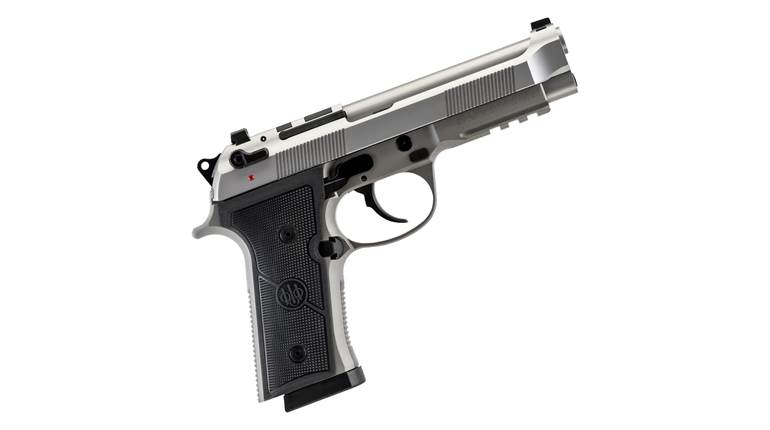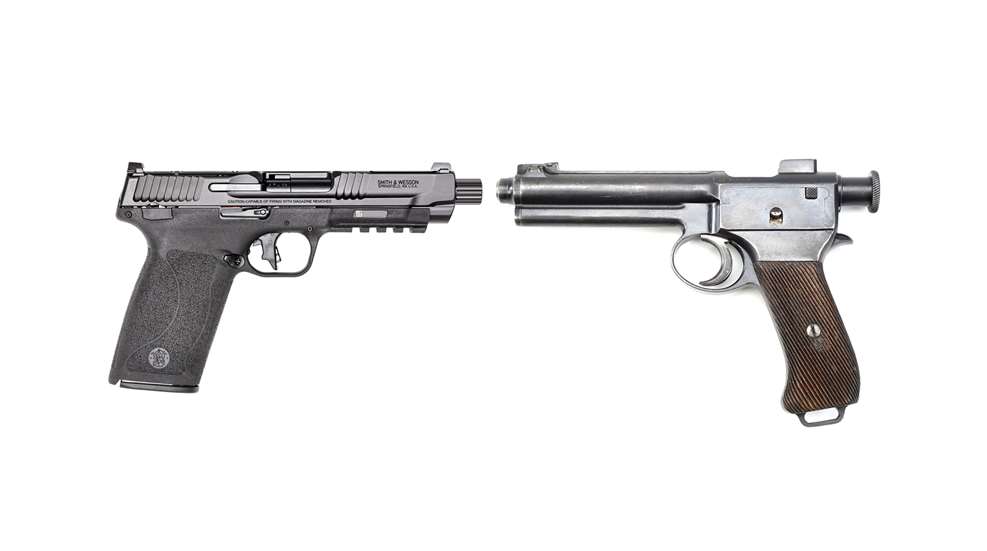
John Browning’s tilting barrel design, which uses a link or cam surface to disengage the barrel’s locking surface from the slide, dominates the world of centerfire semi-automatic handguns. When announcing its new M&P 5.7 pistol earlier this year, Smith & Wesson touted the new handgun’s “Tempo Barrel System” that uses a gas-operated action that is locked with a rotating barrel. While Smith & Wesson’s design is innovative, the idea of using a rotating barrel in a semi-automatic pistol is not a new one and actually dates back to the birth of self-loading handguns in the 1890s. While always occupying a small niche of the handgun world, rotary-barrel pistols played an important role in firearms development and continue to offer innovative design features.
Rotating barrels are used for two purposes in semi-automatic pistols. The first is to delay a blowback-operated mechanism. Instead of just using the weight of the slide combined with a heavy spring to keep the breech closed until pressures have dropped to a safe level, a cam follower lug on the barrel works against a cam surface in a slide to slow the opening of the breech with the barrel’s rotation, allowing components, like the slide and mainspring, to be lighter. The second use of a rotating barrel is in a locked-breech mechanism. In this case, the barrel’s cam lug causes the barrel to rotate as it moves rearward, unlocking separate locking lugs (usually two, three or four) from a slide.
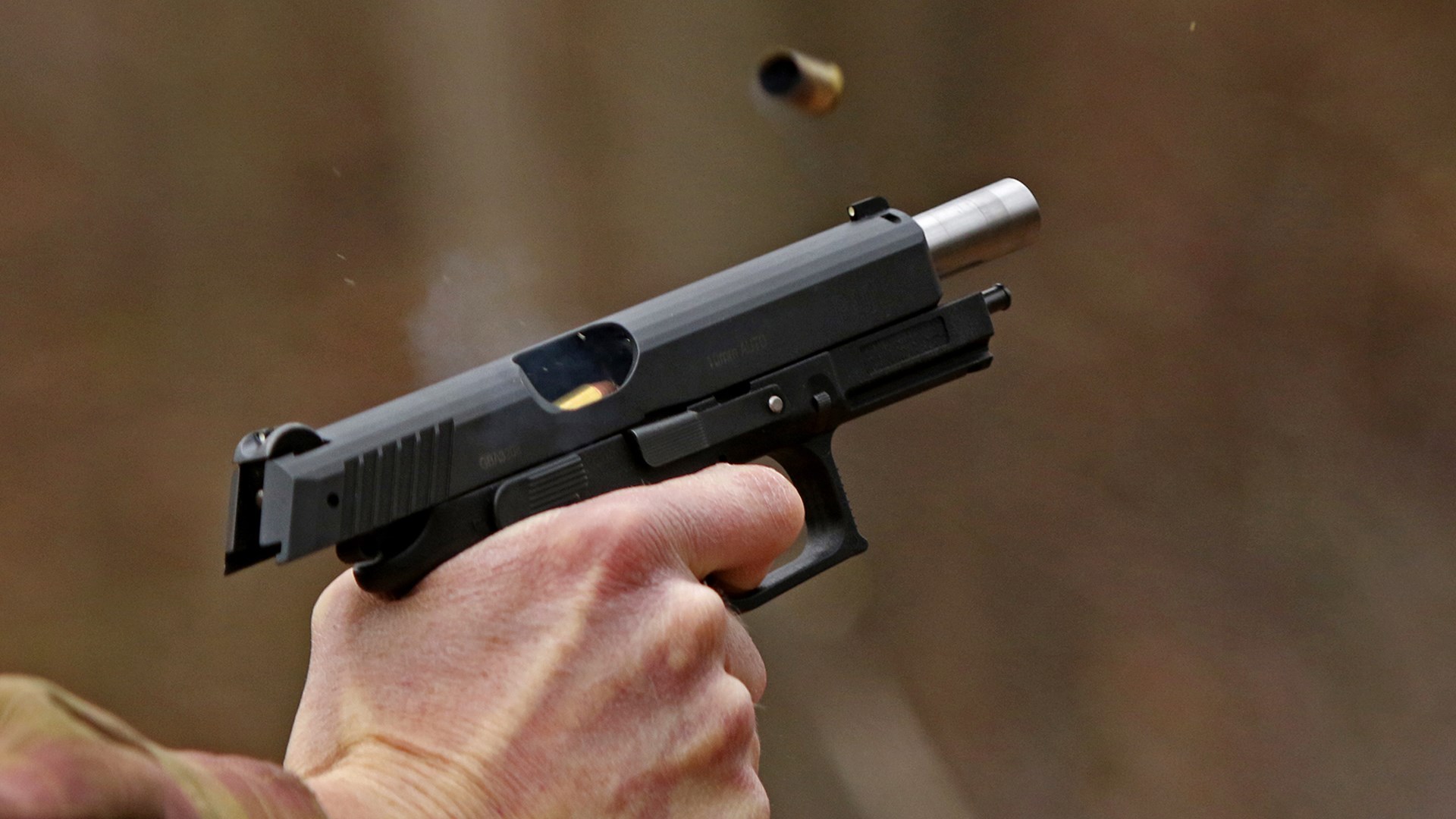 One of the benefits of the rotary barrel system, as used in this 10 mm Auto Grand Power P40L, is minimizing the effects of recoil.
One of the benefits of the rotary barrel system, as used in this 10 mm Auto Grand Power P40L, is minimizing the effects of recoil.
A rotary-barrel action in a semi-automatic handgun has several perceived benefits. The counter-rotational force of the bullet moving through the barrel’s rifling helps to keep the action closed. The rotating action of the barrel means that part of the force is being re-directed, rather than going straight back into the shooter’s hand. The linear movement of the barrel also minimizes muzzle rise. Accuracy is theoretically better, as the barrel stays on the same linear plane as slide-mounted sights. In a locked rotary-barrel design, symmetrical locking lugs around the circumference of the barrel make for a strong action that spreads out the locking forces in an equal pattern. It also allows for a pistol to have a lower bore axis, as the barrel doesn’t need room to drop as it tips to unlock, again contributing to recoil control.
The system also has its drawbacks. A slide tends to be wider to accommodate the locking lug arrangement in locked-breech pistols. Manufacturing a rotary-barrel pistol, especially in early designs, was more complex. And it is problematic to mount a screwed-on suppressor to the muzzle end of the barrel, as the barrel’s rotating action tends to loosen it.
Early semi-automatic handguns experimented with a variety of action types, from the toggle breech of the Luger to rifle-like sliding bolts on designs like the Mauser C96 “Broomhandle.” Austro-Hungarian engineer Karel Krnka was experimenting with long-recoil designs, in which a rotating bolt locked into a barrel and both recoiled together before unlocking. By the early 1900s, Krnka’s designs had evolved to use a rotating barrel that locked inside of a slide.
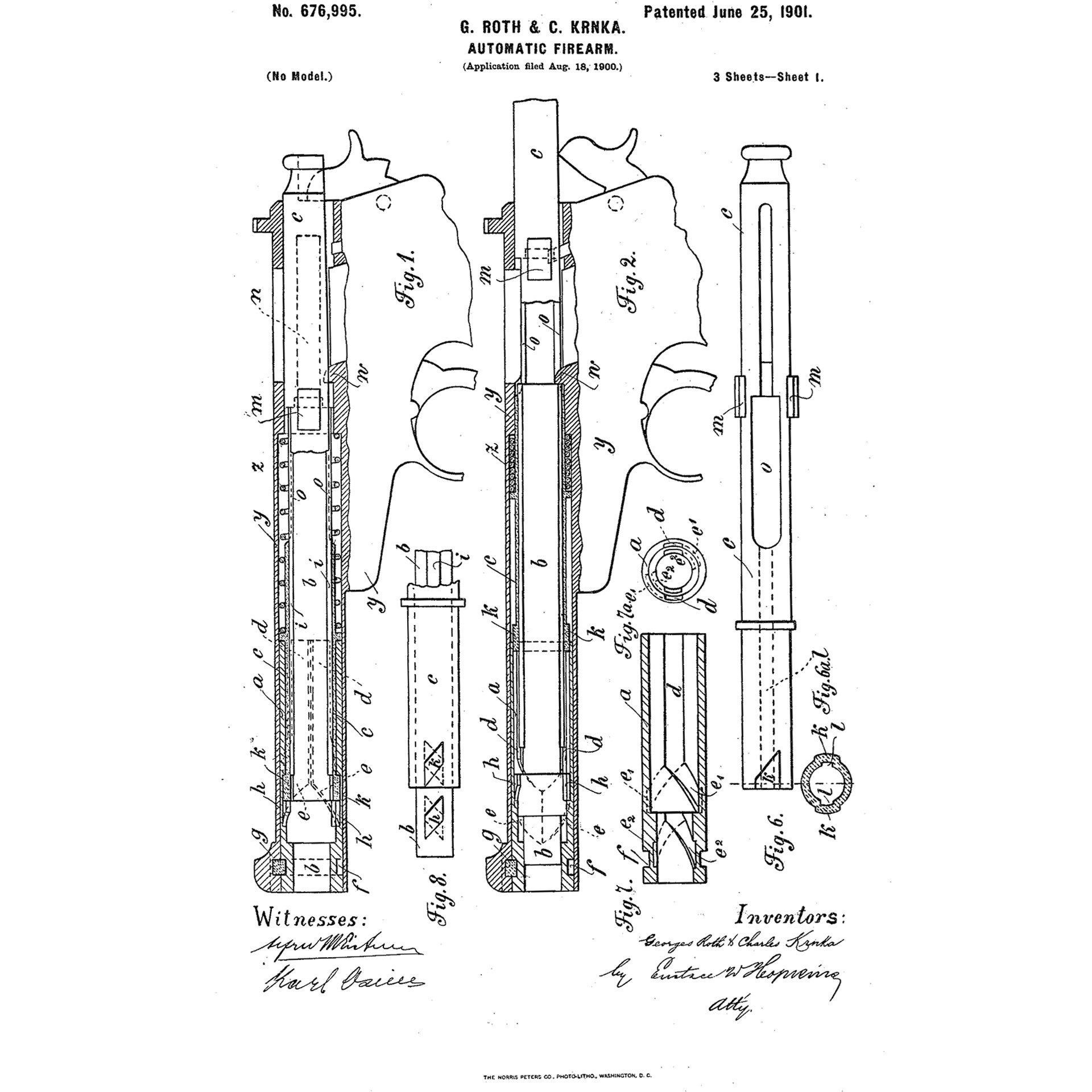 Images from Karel Krnka’s 1901 patent for a rotating-barrel pistol design.
Images from Karel Krnka’s 1901 patent for a rotating-barrel pistol design.
As Krnka continued to refine his design, he paired with Viennese industrialist Georg Roth. Roth was in the midst of trying to develop a semi-automatic handgun that would win adoption by the Austro-Hungarian empire. They would find success with the M1907 Roth-Steyr (Steyr being the manufacturer), which was adopted by the Austro-Hungarians for their cavalry and other select specialized units, marking the first major world power to adopt a semi-automatic handgun for its military land forces.
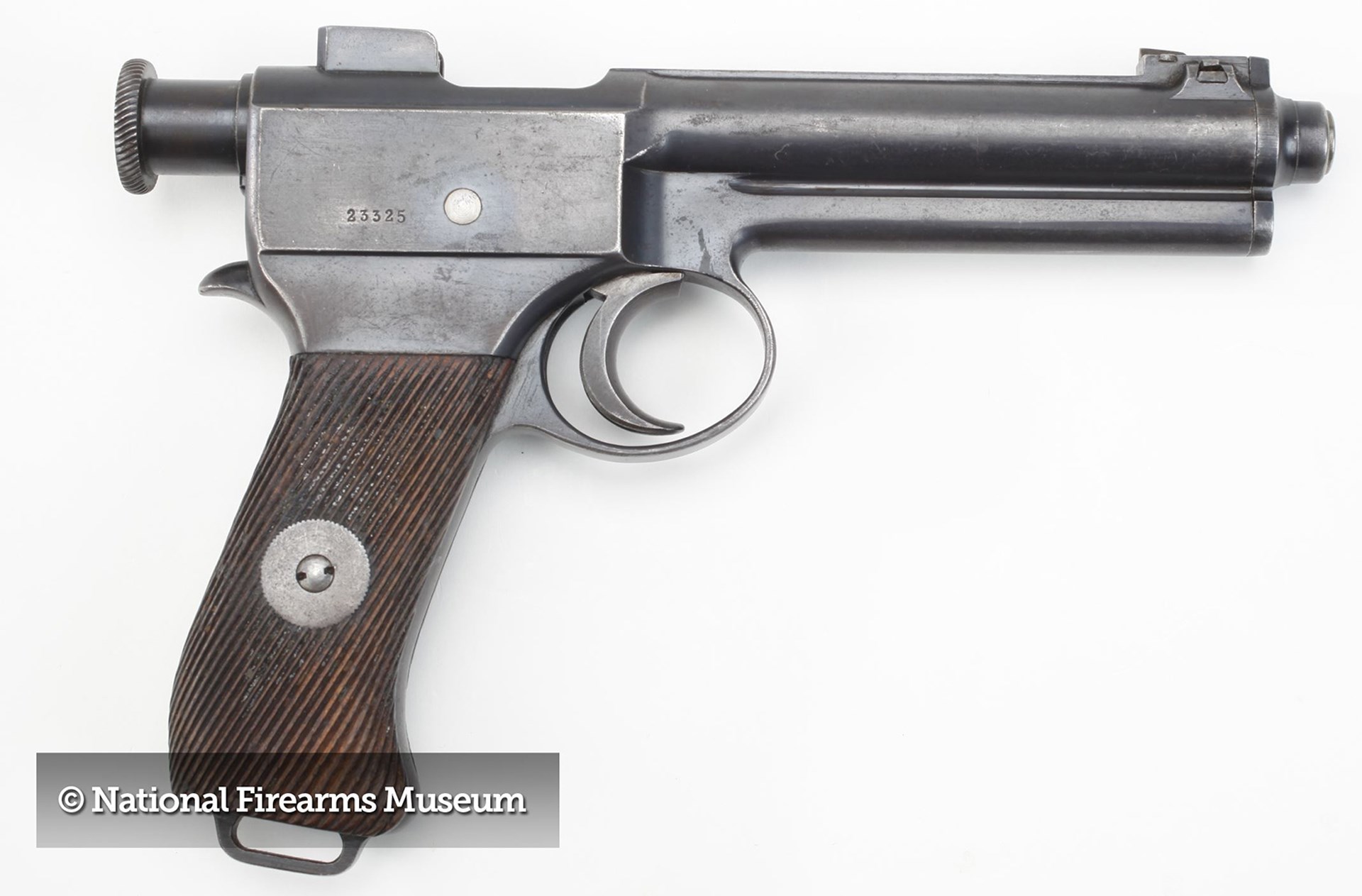 The M1907 Roth-Steyr pistol was the first semi-automatic handgun adopted by the military of a major world power. Image courtesy of the National Firearms Museum.
The M1907 Roth-Steyr pistol was the first semi-automatic handgun adopted by the military of a major world power. Image courtesy of the National Firearms Museum.
The Roth-Steyr was a magnificently machined pistol. The “slide” is formed by the breech bolt telescoping forward and forming a “sleeve” around the rotating barrel, the pair of which ride within the pistol’s frame. It is a short-recoil system in that the barrel and slide of the Roth-Steyr stay locked together at the moment of firing. As they move rearward together, helical grooves in the barrel bushing at the front of the frame act on two cam lugs near the barrel’s muzzle to cause the barrel to rotate and unlock two opposing lugs near the breech, so that the slide can unlock and continue rearward to cycle the action.
In a foreshadowing of a future Austrian handgun, the Roth-Steyr used a striker-fired mechanism where the striker was partially cocked by the movement of the slide. Pulling the trigger cocked it the rest of the way before releasing it to fire the pistol. No manual safety was provided. Firing the 8 mm Roth-Steyr, a cartridge of approximately the same overall length but less power than the 9 mm Luger, the pistol used a fixed 10-round magazine that was fed from the top of the action via a charger clip.
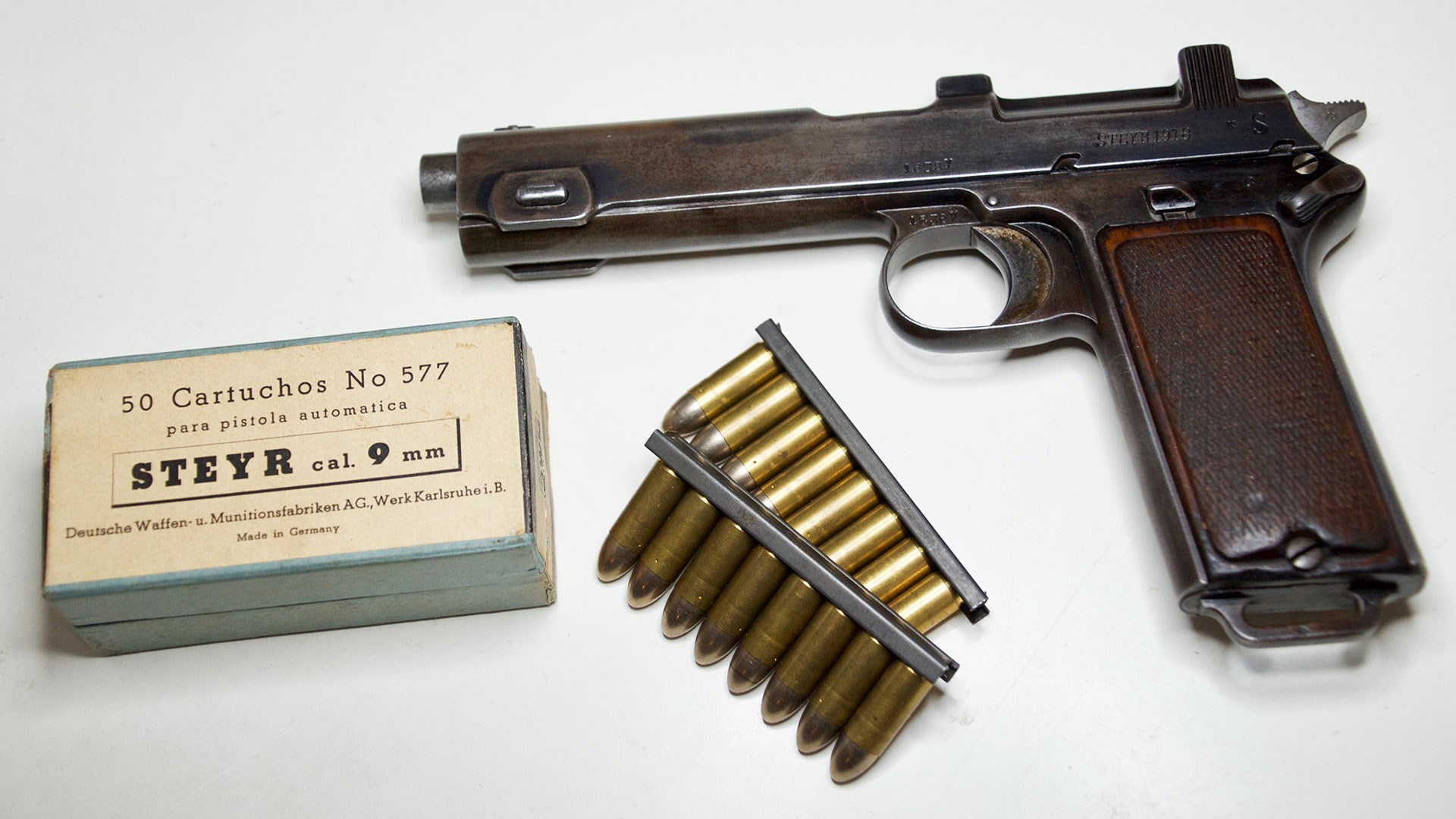 The M1912 Steyr was a more conventional design that took some of its cues from Colt Browning pistols of the day. Note the charger clip used for loading its fixed magazine.
The M1912 Steyr was a more conventional design that took some of its cues from Colt Browning pistols of the day. Note the charger clip used for loading its fixed magazine.
The success of the Roth-Steyr led the Austro-Hungarians to adopt another rotating barrel pistol for the rest of their armed forces. The M1912 Steyr used a more conventional slide riding on top of the frame. The cam lug was moved to the breech area of the barrel and acted in a groove in the frame to rotate the barrel’s two locking lugs and unlock them from the slide. The model was also known as the “Steyr-Hahn,” because, unlike the Roth-Steyr, it used an external hammer (“hahn” is the German word for a firearm’s hammer) and a manual safety. The magazine was still fixed, internal and loaded with charger clips and held eight rounds of 9x23 mm ammunition. A fully automatic version of the M1912 was made that featured an extended, but still fixed, magazine. In World War II, during the German occupation, Austrian M1912 pistols were converted to 9 mm Luger. All total, over a quarter million of the pistols were made. Nearly all modern short-recoil, locked, rotary-barrel pistols use elements of the M1912 Steyr design.
Mauser designer Josef Nickl used the Steyr-Hahn pistol as the basis for an experimental Mauser military pistol made in 1915. Though not adopted by the German military, the design was scaled down and used in the Czechoslovakian vz. 22 and vz. 24 pistols. These handguns were chambered in .32 ACP, which engineers realized did not require a locked breech, so the design was simplified into the blowback-operated vz. 27.
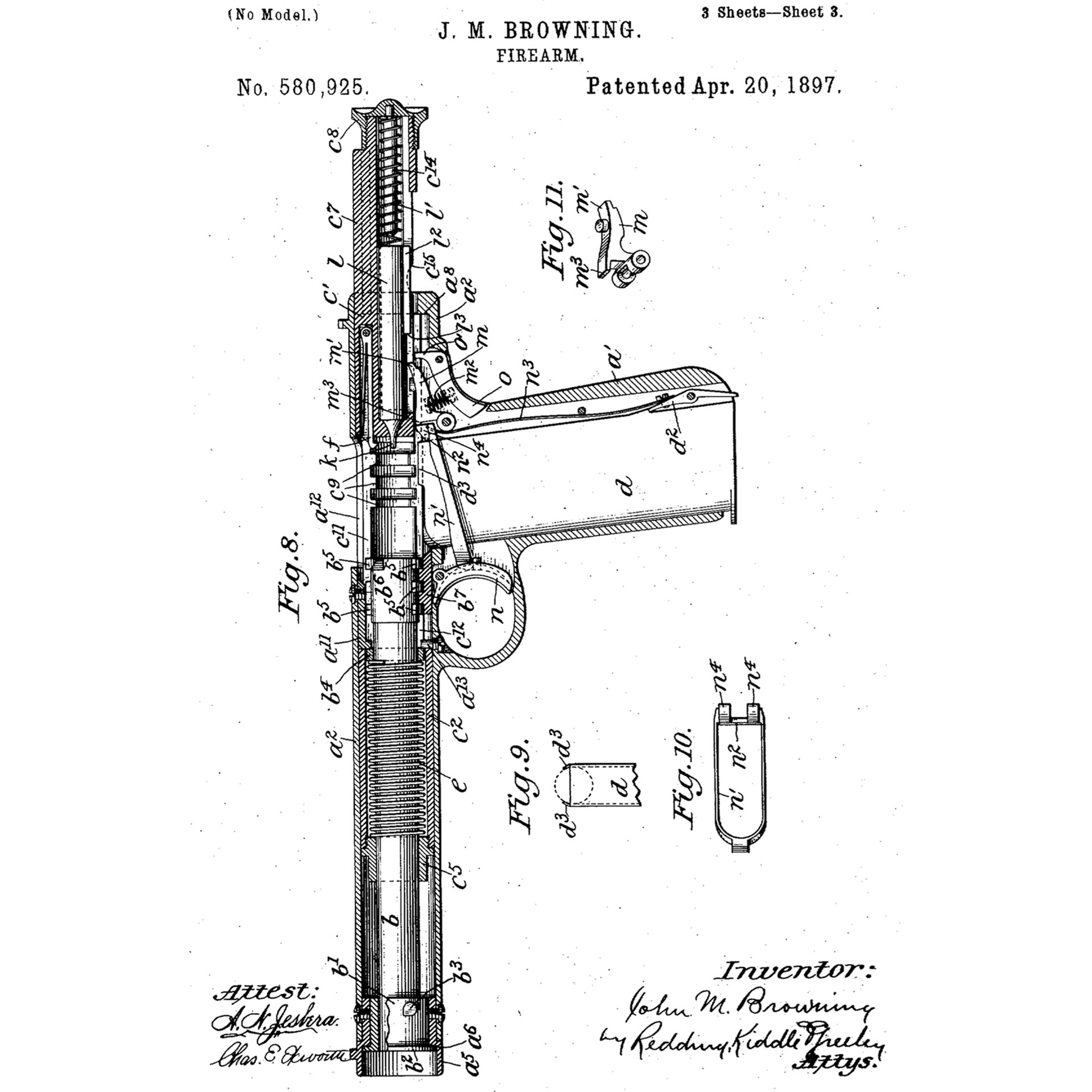 Drawings from John Browning’s 1897 patent for a rotary-barrel pistol.
Drawings from John Browning’s 1897 patent for a rotary-barrel pistol.
Rotary barrel pistols were not exclusively a European idea. John Browning himself was issued an 1897 patent for such a design. By the early 1900s, Savage was working on its own rotary-barrel semi-automatic pistol, based on the work of Elbert Searle. Though Savage called the design “locked breech,” the pistol did not use separate locking lugs, but merely a cam follower lug that operates in a cam groove in the slide and a lug that limited the barrel’s rearward movement in the frame. In theory, the torque forces of the bullet passing down the barrel, whose rifling twisted in the opposite direction that the barrel rotated, combined with the barrel’s rotation as the slide was opening, would hold the breech closed until chamber pressure had dropped to a safe level. In practice, the system was more of a delayed-blowback mechanism.
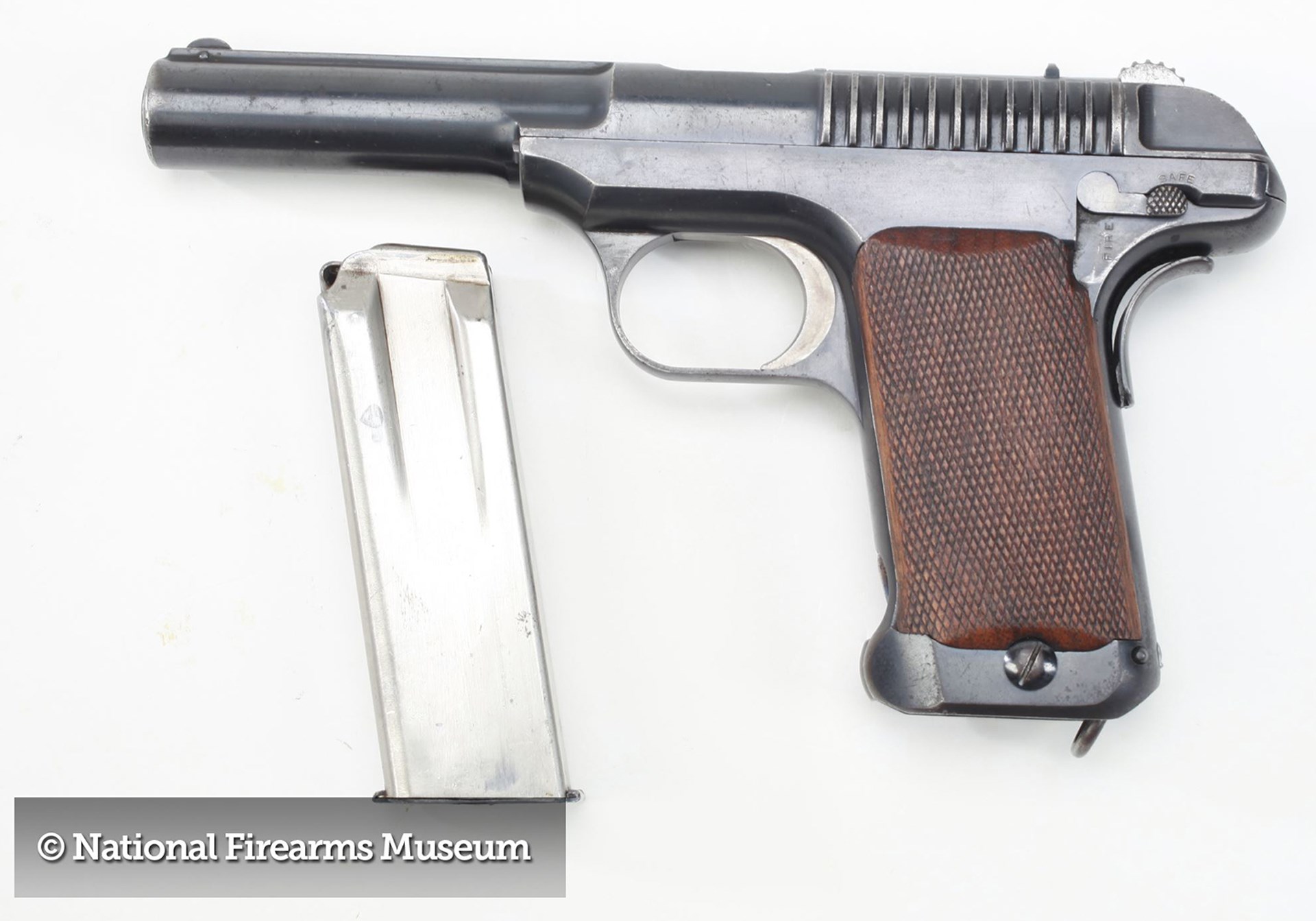 An original .45 ACP Savage trial pistol. Image courtesy of the National Firearms Museum.
An original .45 ACP Savage trial pistol. Image courtesy of the National Firearms Museum.
When the U.S. Army announced that it was seeking a semi-automatic pistol, Savage jumped into the competition scaling their design to the .45 ACP cartridge. Though the trial came down to the Savage, and a Colt that would become the M1911, the violent recoil of the Savage took its toll on the pistol’s durability and the rest, as they say, is history. The Savage design worked much better in smaller calibers, and the 1907 pistol and its derivative designs went on to be commercially successful in .32 ACP and .380 ACP.
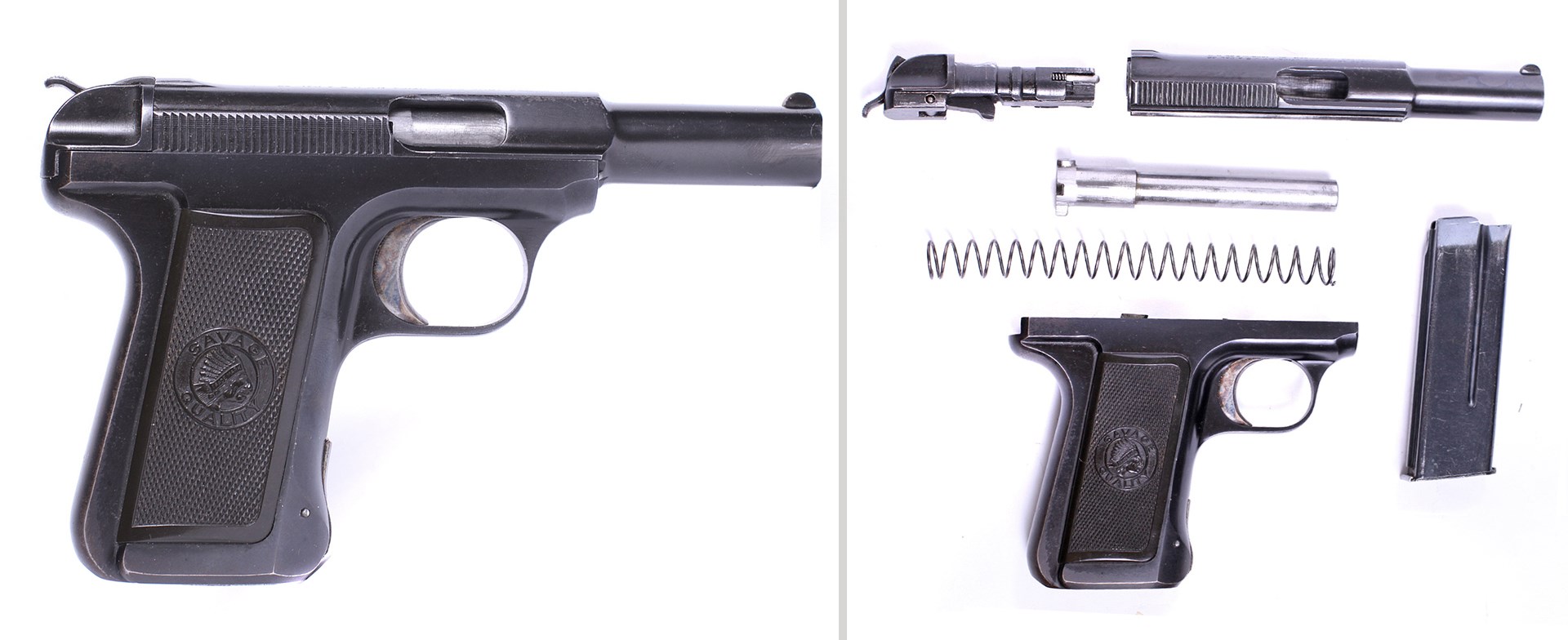 A .32 ACP Savage 1907 pistol, also shown fieldstripped.
A .32 ACP Savage 1907 pistol, also shown fieldstripped.
Rotary-barrel pistols served in combat with both sides in World War I, from the Steyr pistols of the Central Powers to Savage 1907 handguns used by the Portuguese and adopted as a substitute standard by the French on the Allied side.
Between the world wars, one curious rotary-barrel pistol would emerge, which was essentially a rotary-barreled “M1911.” The M1911 design was popular in Mexico for both police and military use. In 1934, native firearm designer Alejandro Obregón introduced a pistol that mated a Steyr-type rotating barrel with an M1911 frame. The pistol, chambered in .45 ACP, looks extremely similar to an M1911A1, except for the bulbous area on the front of the slide and Obregón’s innovative combination of the slide release and safety into one piece. The Obregón was not adopted by the Mexican military, and fewer than 1,000 were produced.
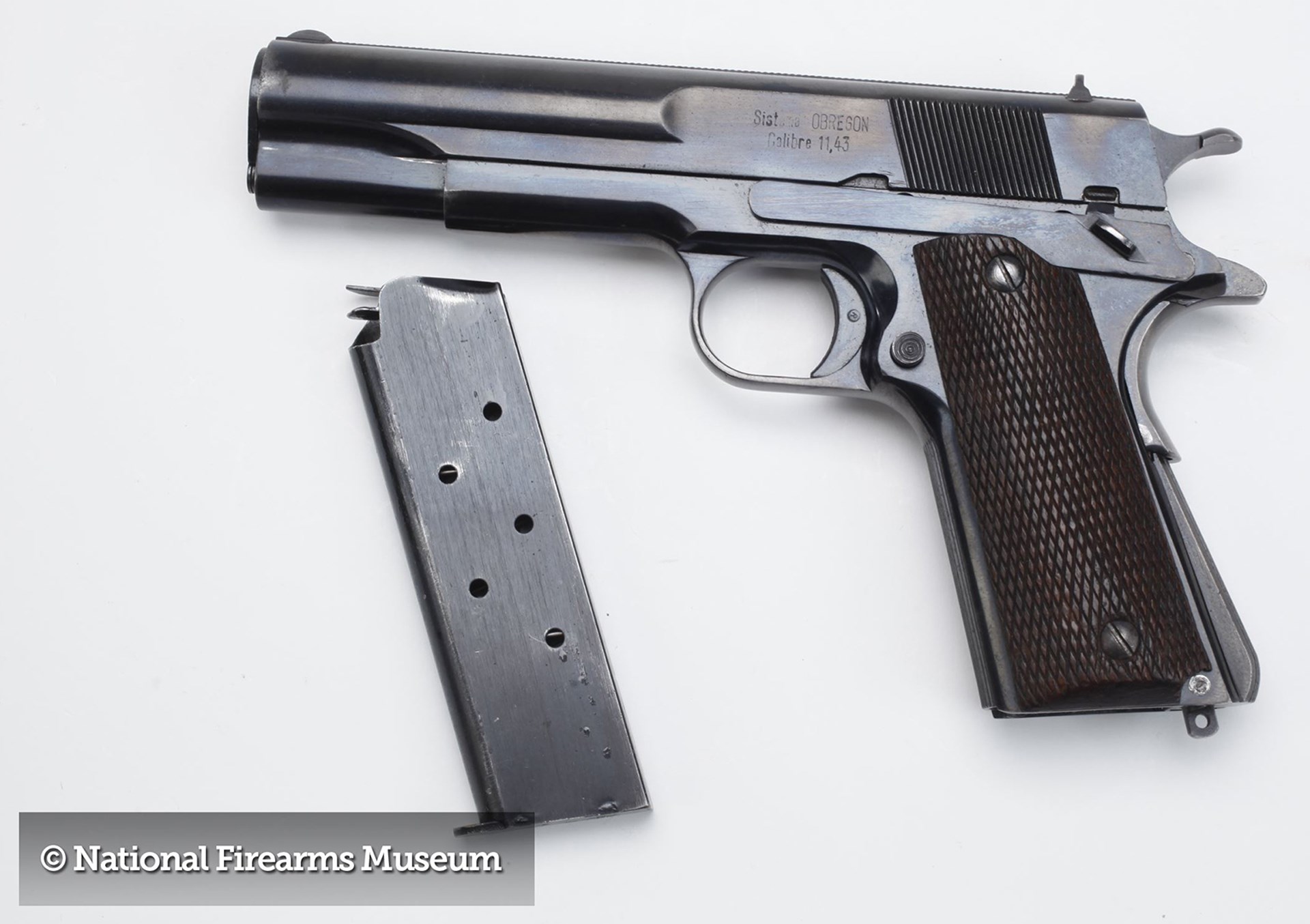 The Obregón rotary-barreled “1911.” Image courtesy of the National Firearms Museum.
The Obregón rotary-barreled “1911.” Image courtesy of the National Firearms Museum.
The post-World War II era saw one notable rotary-barrel pistol design. The French MAB P-8 and PA-15 used a rotary-barrel to delay the action from opening, much in the manner of the Savage. A commercial product that saw limited military adoption, a long-barreled target version was also produced.
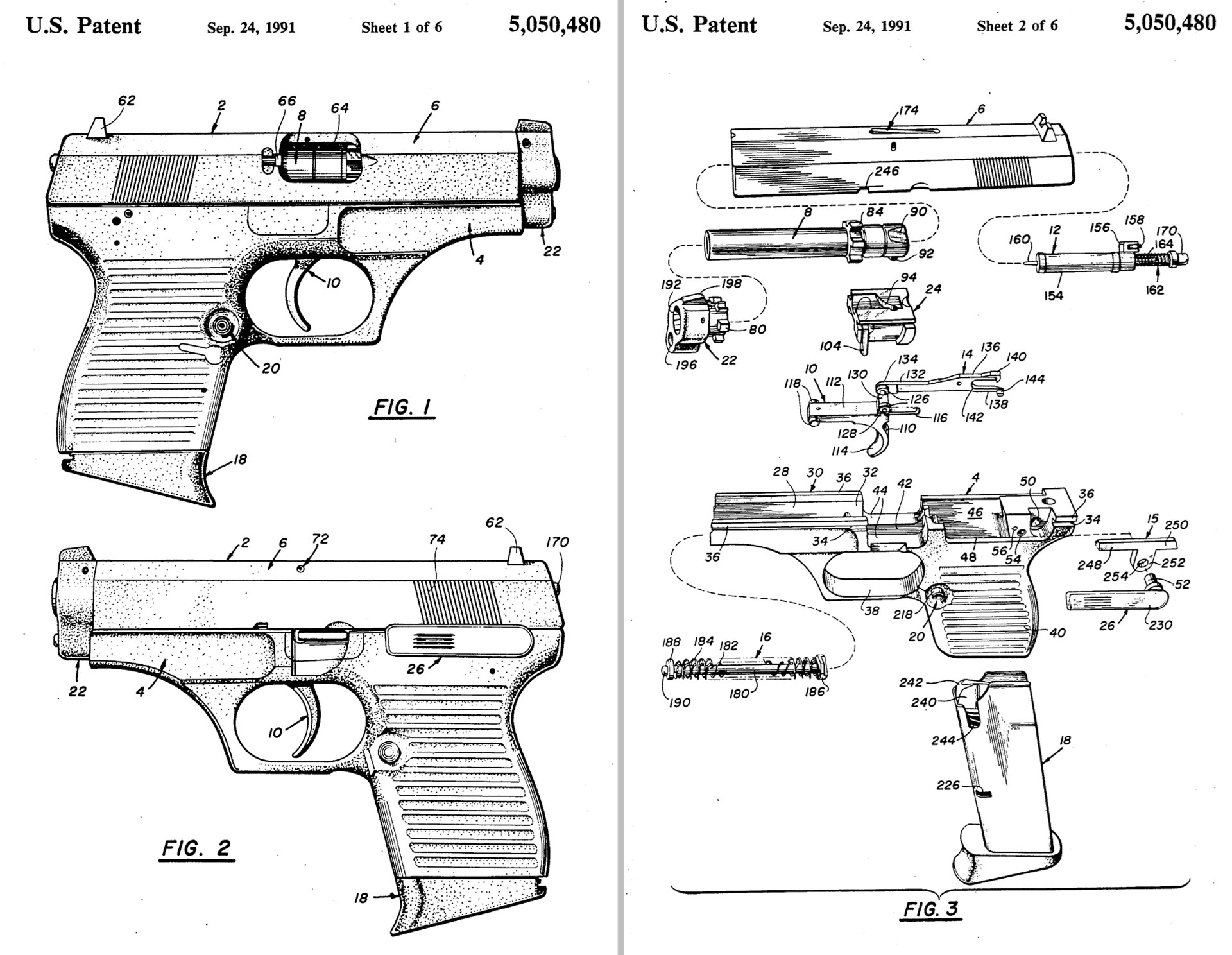 Stoner Patent. Images from Knight and Stoner patent for the pistol that would become the Colt 2000 All American.
Stoner Patent. Images from Knight and Stoner patent for the pistol that would become the Colt 2000 All American.
In 1980s, the concept of a rotary-barreled pistol was taken up by none other than the godfather of the AR-15, Eugene Stoner. Stoner, along with Reed Knight, designed a rotary-barrel pistol (the barrel’s four radial locking lugs reminiscent of the bolt head of the AR-15) with a double-action-only trigger mechanism that used roller bearings. The design was licensed to Colt, who produced it as the All American 2000. The 9 mm Luger pistol was made in both polymer and alloy frame versions and used a 15-round magazine. Changes made to the design after it left Knight and Stoner’s hands, along with the shaky foundation of the Colt company at the time, doomed the All American to commercial failure.
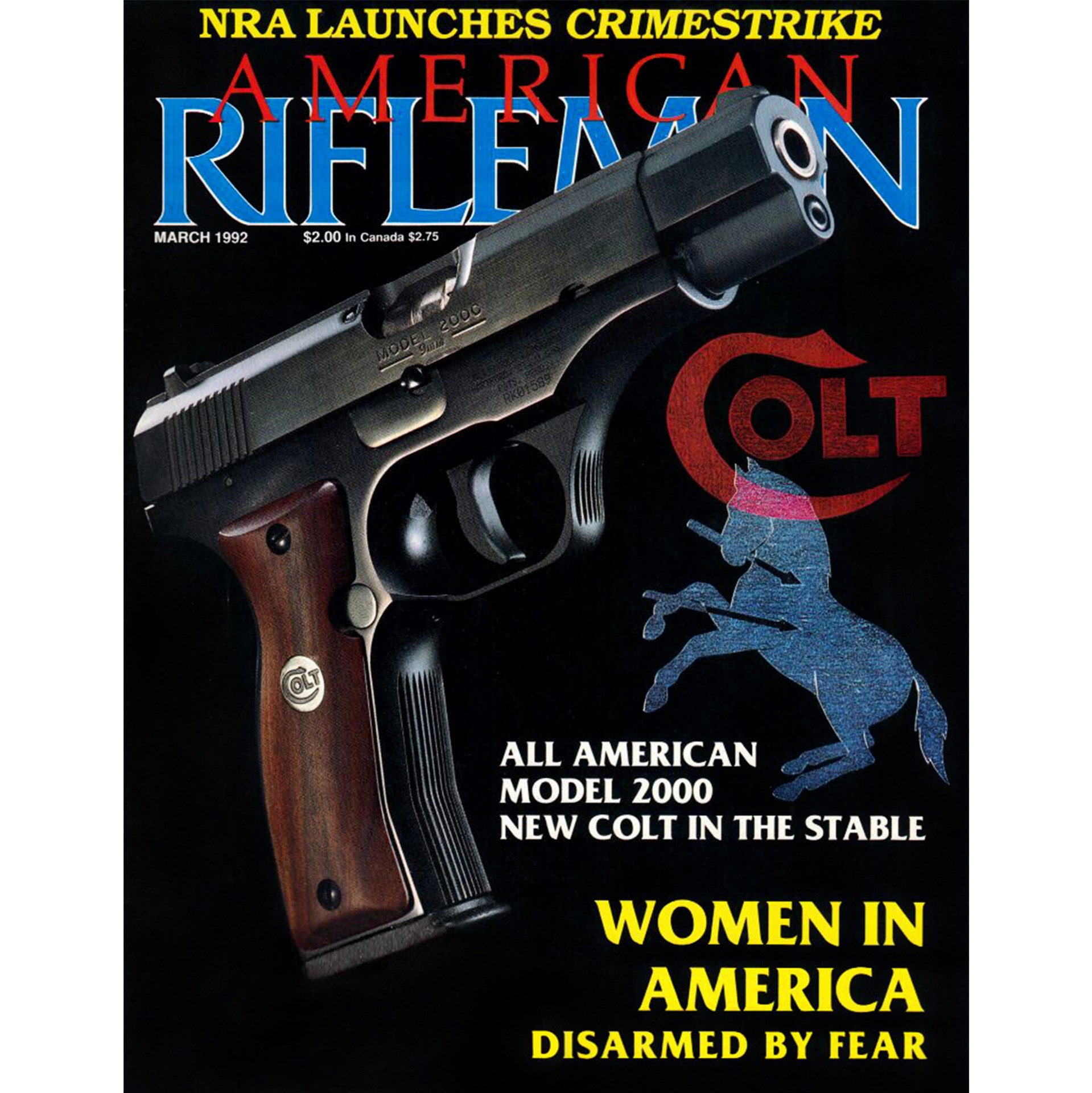 The gun of the future that was not to be.
The gun of the future that was not to be.
In the 1990s, the U.S. Special Operations Command (USSOCOM) issued a tender for an Offensive Handgun Weapons System (OHWS). Colt entered an amalgamation of its M1911, Double Eagle and All American pistols, adapting the rotary barrel mechanism of the latter. The program ended up being won by the Heckler & Koch Mk 23, and the Colt’s rotary-barrel pistol experiment headed to the scrap heap.
The Colt OHWS highlights one drawback of the rotary-barrel design—the tendency of the barrel’s rotating action to loosen a threaded-on suppressor. As USSOCOM required that the pistol mount a suppressor, the Colt design necessitated the use of a separate muzzle device that was mounted to the frame rail rather than directly to the muzzle of the barrel. Smith & Wesson has overcome this issue by placing its rotating barrel on the 5.7 within a shroud, the end of the shroud, which doesn’t rotate, being the suppressor attachment point.
Despite Colt’s struggle and very public failure with the All American, over the next three decades, rotary-barreled pistols did not disappear but flourished in several designs from major manufacturers. In the 1990s, Beretta deviated from its classic open-top slide and Walther-type hinged locking mechanism to use a closed-top slide and rotating barrel in its 8000 Cougar series. The double-action/single-action, alloy-frame pistol was made in a variety of configurations and chamberings, including 9 mm Luger, .357 SIG, .40 S&W and .45 ACP.
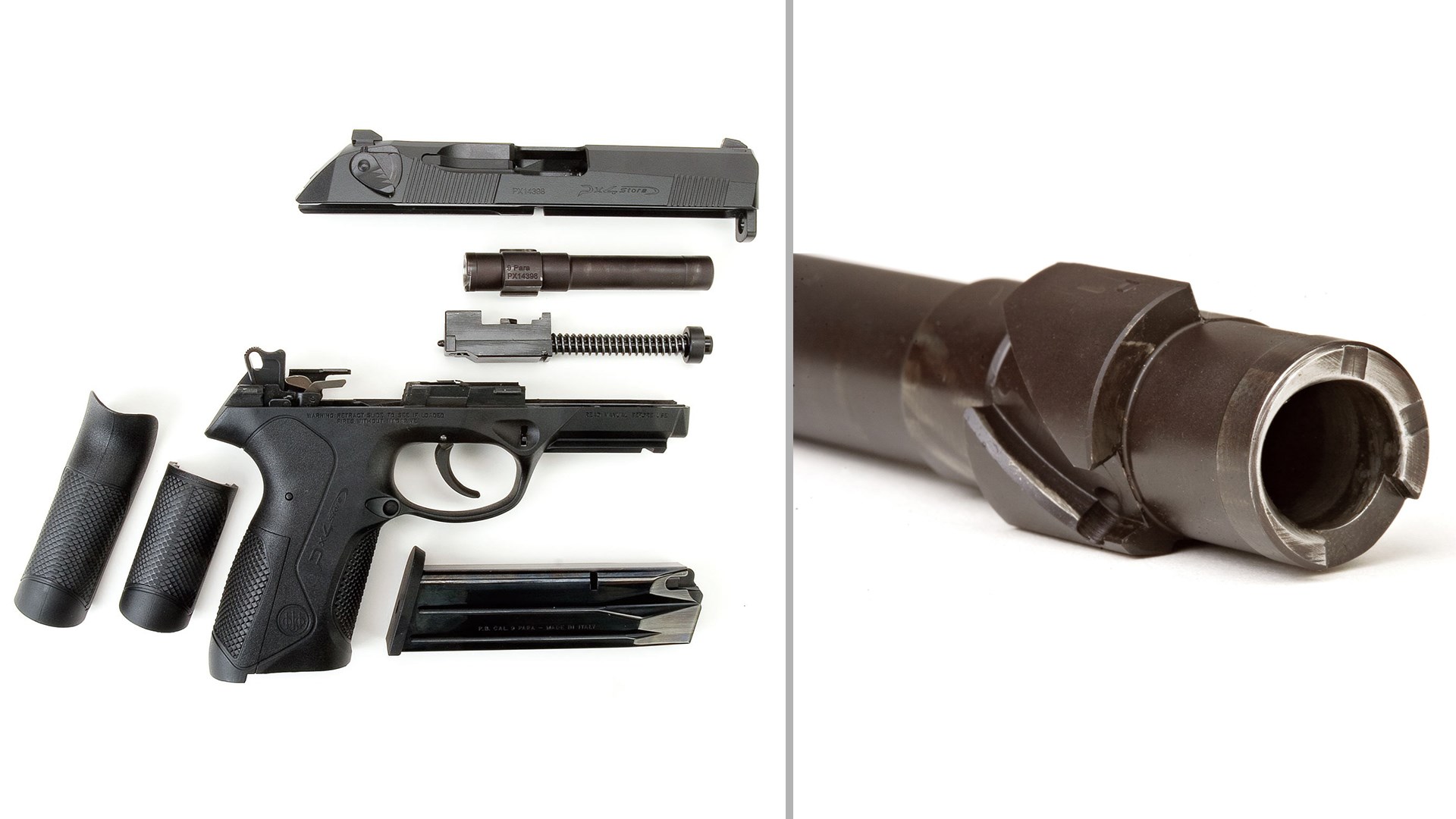 A close-up of the Beretta Px4’s barrel and the components of the pistol when fieldstripped.
A close-up of the Beretta Px4’s barrel and the components of the pistol when fieldstripped.
Beretta’s production of the Cougar ended when the company introduced its Px4 Storm series of handguns in 2005. The Px4 swapped the Cougar’s alloy frame for a polymer one and simplified the rotating barrel mechanism. Taken over by Turkish manufacturer and Beretta subsidiary Stoeger, the Cougar continues to be manufactured, although its importation into this country has ceased.
In 2000, SIG applied the Mauser name, which it owned the rights to at the time, to a rotary-barrel pistol called the M2. The M2 was striker-fired and used an alloy frame and was chambered in .45 ACP, .40 S&W and .357 SIG. It was discontinued in 2005.
One of today’s most prolific makers of rotary-barreled pistols is, fittingly, in Eastern Europe. Slovakian company Grand Power has developed an entire line of pistols from its original K100 model. Popular for competitive shooting in Europe, Grand Power pistols were originally imported into this country by STI. Instead of using a cam follower lug on the barrel and a cam groove in the frame, Grand Power pistols use a helical groove in the rear of the barrel that acts on a steel pin in the frame to impart the barrel’s rotation. Grand Power pistols are chambered for cartridges up to and including the 10 mm Auto.
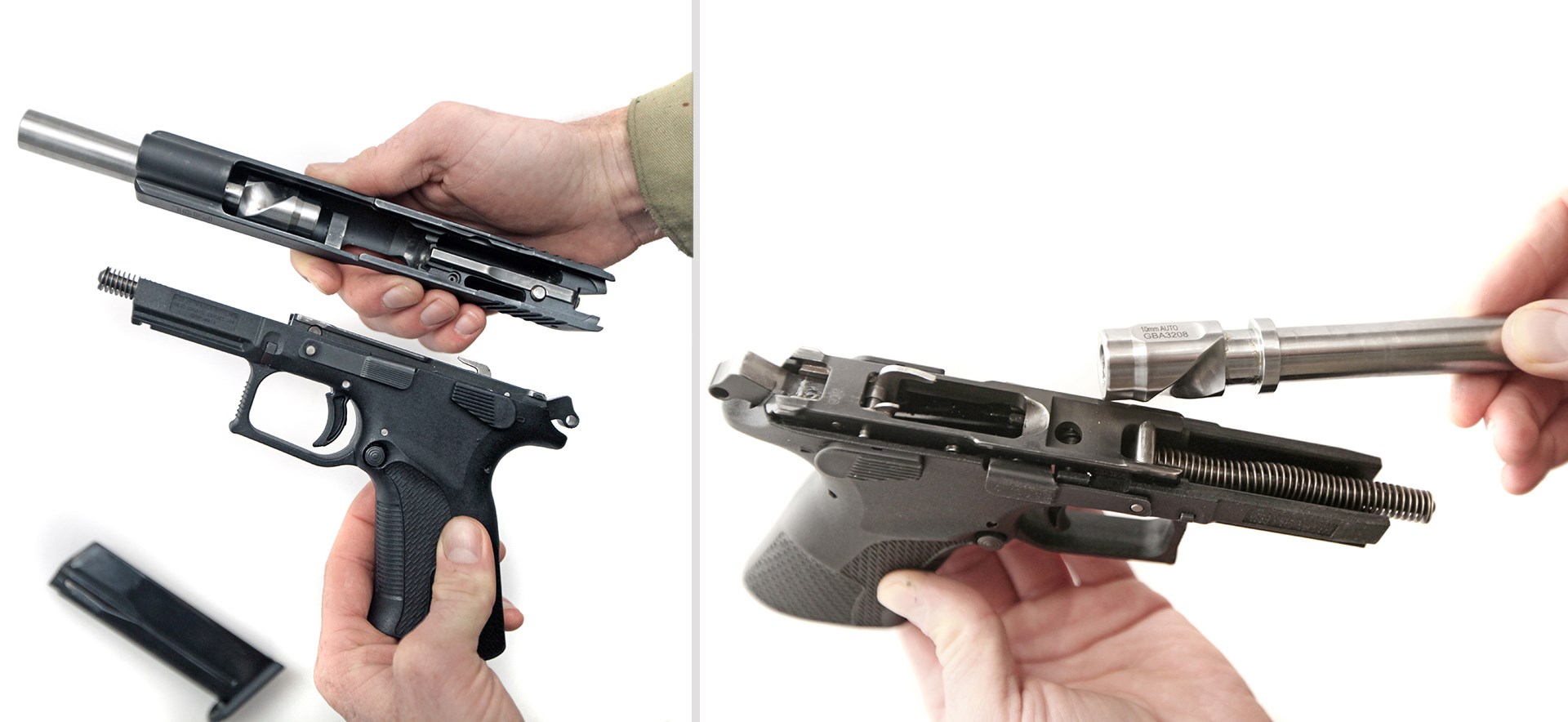 The unique barrel cam surface of the Grand Power design that interacts with a steel pin mounted in the pistol’s polymer frame.
The unique barrel cam surface of the Grand Power design that interacts with a steel pin mounted in the pistol’s polymer frame.
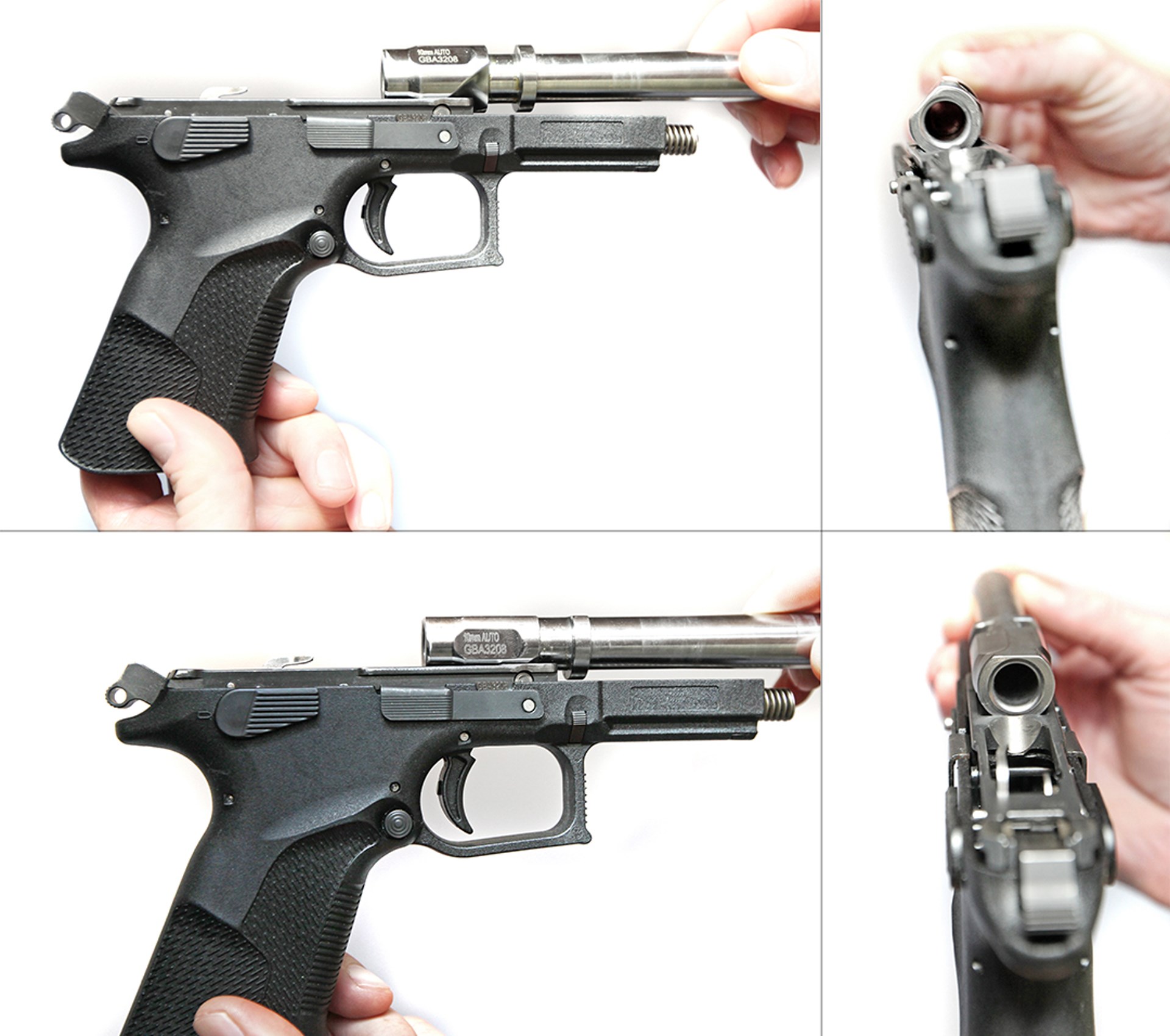 This series of images show the Grand Power barrel in both its locked and unlocked positions.
This series of images show the Grand Power barrel in both its locked and unlocked positions.
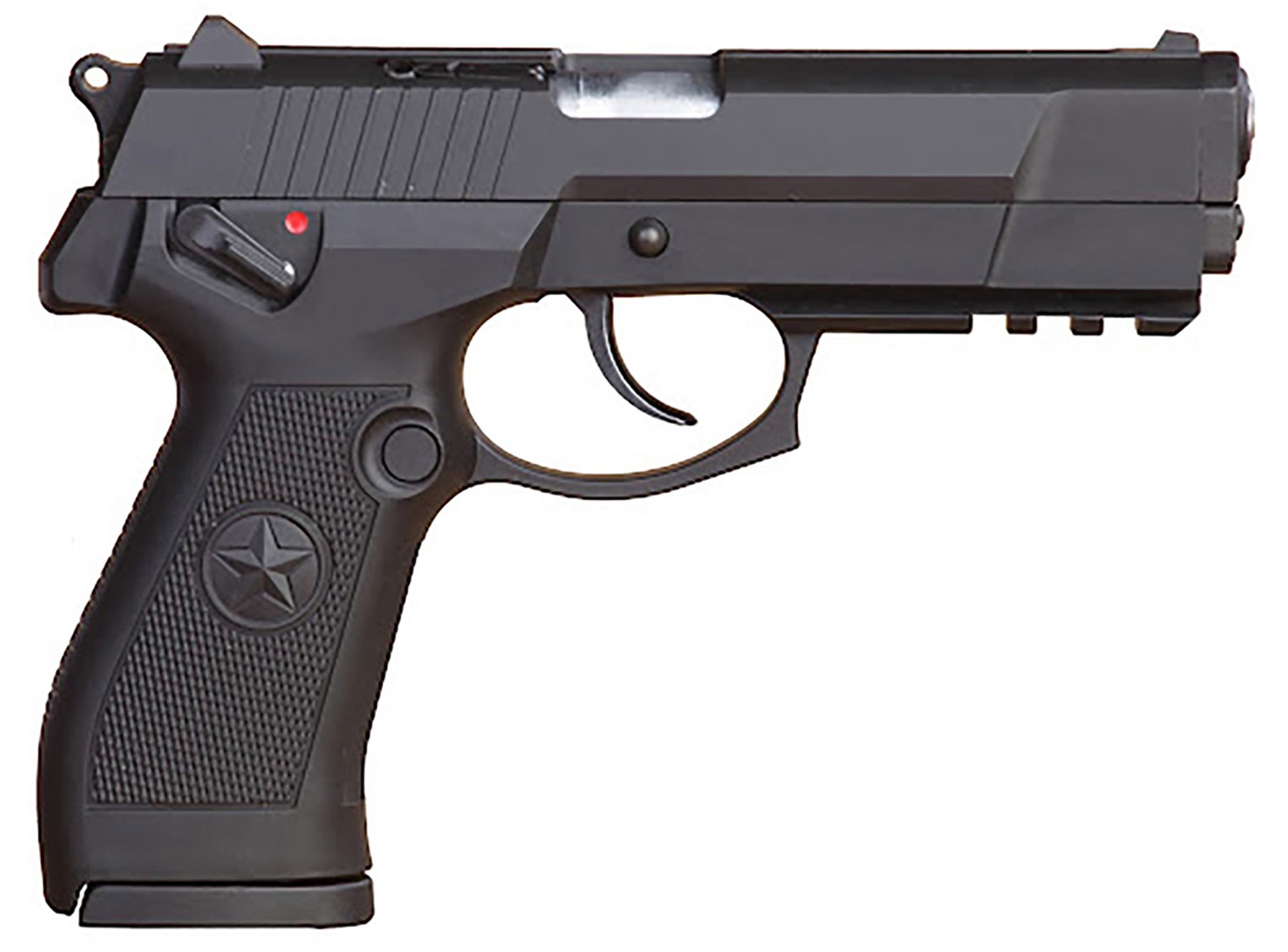 The Norinco CF-98, a 9 mm Luger commercial version of the rotary-barrel, Chinese service pistol, the QSZ-92.
The Norinco CF-98, a 9 mm Luger commercial version of the rotary-barrel, Chinese service pistol, the QSZ-92.
Starting out as the first semi-automatic service pistol, a rotary-barreled design is now serving in the world’s largest military. The Chinese QSZ-92 is a double-action/single-action, polymer-framed pistol that fires a unique 5.8x21 mm cartridge and uses a 20-round magazine. The pistol is chambered in 9 mm Luger for law enforcement and also sold commercially in parts of the world where Chinese firearms are allowed to be imported as the NP-42 and CF-98.
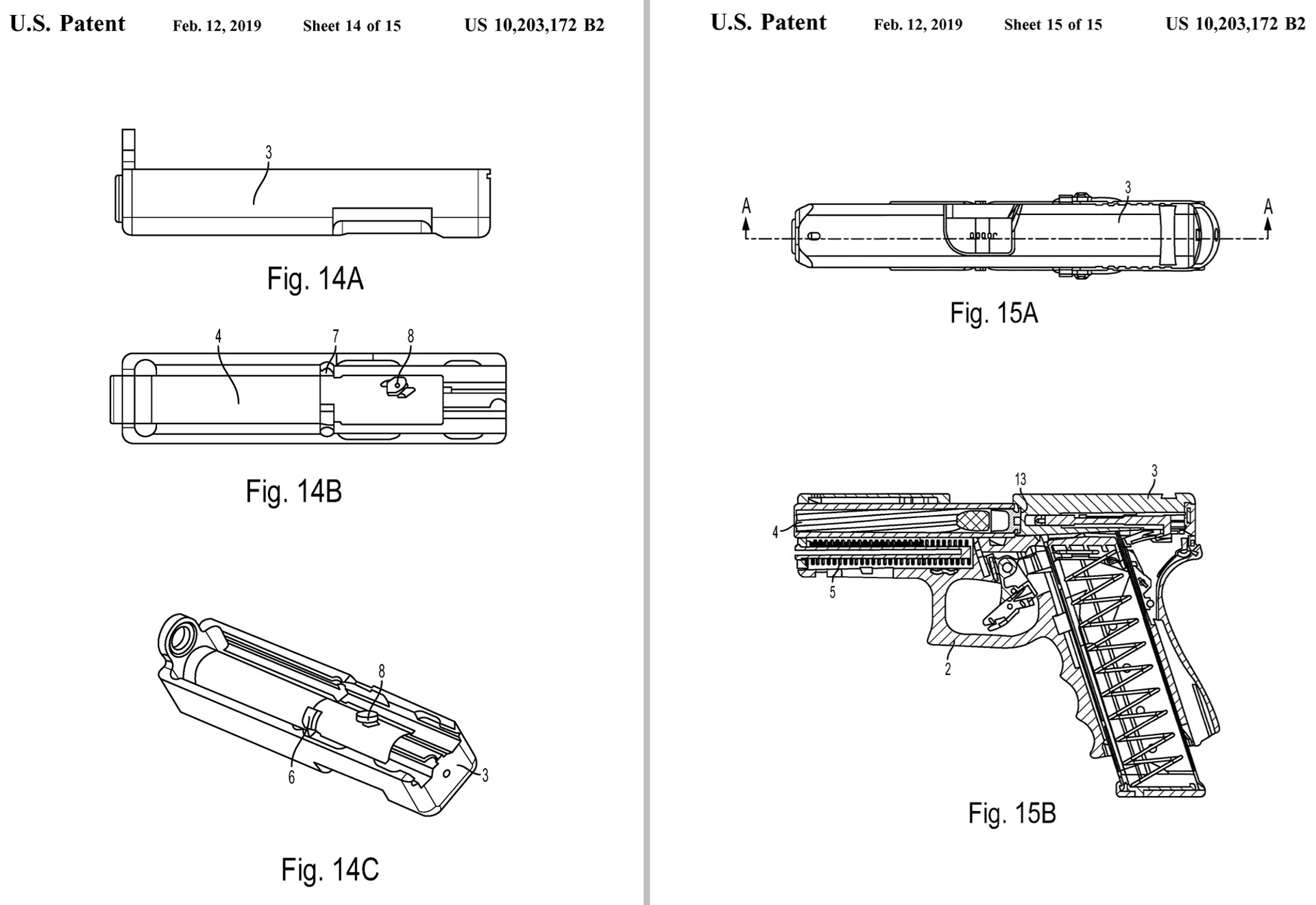 Images from Glock’s patent for a rotary barrel pistol design that would become the Glock 46.
Images from Glock’s patent for a rotary barrel pistol design that would become the Glock 46.
Over a century after the first rotary pistols were being built in the Austro-Hungarian empire, the design’s history has come full-circle. Austrian company Glock, who used the half-cocked striker concept of the Roth-Steyr, has also adopted that design’s rotating barrel with the Glock 46. Nominally the size of the company’s Model 19, the Glock 46 was designed for a German police contract. Glock touts better accuracy and the lower bore axis of the rotary design and the pistol also has a unique striker mechanism that allows it to be disassembled without pulling the trigger. There are no plans to sell the pistol commercially.
While a design that will never dominate the semi-automatic handgun market, the rotary-barreled pistol labors on, and pistols like the S&W M&P5.7 show there is still room for innovation, with a twist.













